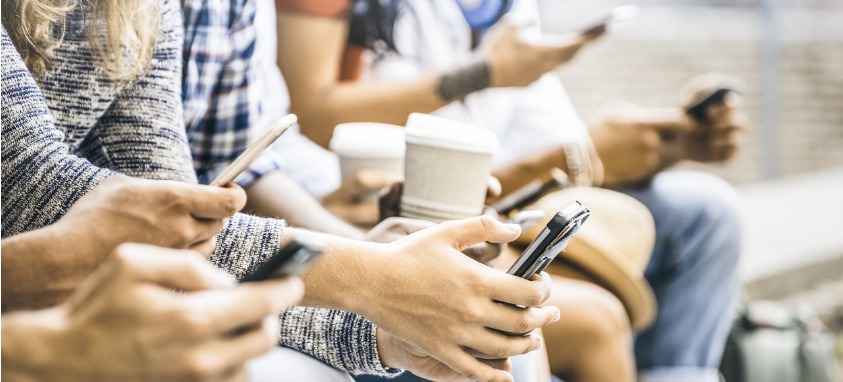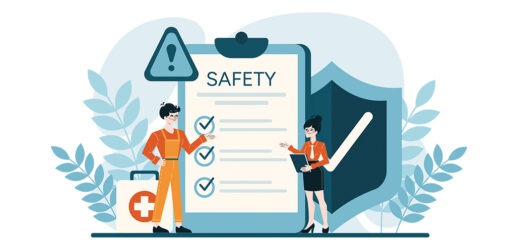As a society, we’re a continuously connected bunch. We’re constantly on our phones and tablets, checking email and browsing the web. With so many devices vying for our attention, it’s easy to see how our dependence on these electronics can be viewed as a hurdle for presenters, especially as they are confronted with a sea of bowed heads distracted by other content.
How can planners help presenters compete with the ubiquity of handheld devices?
One answer is to not demand attention. One presenter at a recent conference made the mistake of scolding her audience to turn phones off and put them under their seats. She was met with groans; about a third of the audience left, and the rest ignored her command.
The reality is, devices are here to stay, and even the most engrossing presentation won’t get audiences to set those devices aside.
So, why not capitalize on these second screens? Instead of viewing devices as a challenge, consider them an opportunity.
Why Phones Aren’t as Bad as Show Organizers Think
Rather than being a distraction, mobile devices can be the surprising key to increasing audience engagement.
People use their devices these days to discuss, share, and augment all kinds of experiences—from TV shows and sporting events to conferences and meetings. In fact, according to an Accenture report, 87 percent of consumers use a smartphone as a second screen when they watch television. During high-profile events, such as football games and awards shows, many shift their attention between the TV screen and the online conversation generated by the event, sharing their thoughts in real time and following trending hashtags on platforms like Twitter.
The same phenomenon occurs during a conference or meeting. After observing hundreds of presentations and interviewing attendees, researchers have found that when a presentation is captivating, attendees don’t want to put away their phones. Instead, they use their devices to:
- Share slides, quotes, and interesting facts on social media
- Take notes
- Dig deeper into the ideas and concepts presented.
Conversely, when a presentation is boring or the speaker’s off-putting, attendees may use their devices to share criticism with one another.
Either way, the era of listening placidly to a “sage from the stage” is over. Mobile devices have become intrinsic to how most attendees experience presentations—and for the better. When attendees can use their devices to navigate slide decks, ask questions, take notes and respond to polls and quizzes, retention rates can skyrocket by much as 60 percent and higher.
If presenters try to discourage this interactivity, attendees rebel—as that unfortunate presenter mentioned above discovered.
Instead of fighting a losing battle against second screens, show organizers can give presenters the tools to harness this new way of engagement, enhancing and augmenting their presentations. The result is a win-win: Attendees have richer experiences and presenters and organizers gain data-driven insight into how attendees react throughout a talk.
So, what are these tools?
How Today’s Technology Turns Phones into Allies
Rather than simply leaving attendees on their own to figure out how to take notes or share information, organizers can provide an application specifically designed for event audiences. Ideally, these applications should:
1. Allow attendees to ask questions through their devices
Research has found that the number of questions asked per session can jump significantly when attendees can ask them anonymously via their phones.
Often, of course, this results in too many questions for presenters to answer. It does, however, give presenters the option of choosing the best among the questions, following up with attendees after the session, or using the questions as a basis for new webinars or FAQs.
2. Allow attendees to access slides through their devices
This is, perhaps, the simplest way to engage attendees through their devices. Attendees’ retention increases by around 40 percent when slides are pushed to their devices. Slides on a handheld device have an interactivity that slides displayed on a large up-front screen lack. Attendees can zoom in on information that catches their eye and can later review it, as the slides are automatically emailed to them after the show.
3. Allow attendees to take notes on their devices
Note-taking during a presentation often involves hastily scribbling down or typing quotes or data points before a presenter moves on to the next slide. When attendees have the slides in front of them on their devices, they don’t have to worry about copying down information. Instead, they can focus on digesting the content, as they’ll only need to add as many notes as needed for context or to spark ideas.
4. Use gamification to up the ante on audience engagement
The competitive impulse is hard to resist. Show organizers and presenters can use second screens to turn quizzes and polls—which usually suffer from low participation—into friendly competitions. For example, show organizers can run presession trivia games to engage attendees with their housekeeping slides and their sponsors.
A recent gaming conference turned multiple-choice training questions into a quiz show that attendees could participate in with their smartphones. Over the course of 12 presentations, 84 percent of audience members who logged into the second-screen platform submitted at least one answer.
5. Continue the after-show momentum
Second screens can boost engagement after a show, as well. For example, if organizers and presenters have access to the names and email addresses of people who submitted questions, they can continue the conversation. This represents a huge opportunity for follow-up marketing and for developing new content based on the feedback received through second-screen platforms.
One emerging use of second screens is to extend presentations to audiences who missed the live experience. With this technology, viewers can access on-demand recordings of presentations, follow along and take notes, and participate in quizzes and polls as if they had been in the conference room. It’s more engaging than a recorded video because it’s interactive.
6. Provide access to data and insights
Finally, organizers should make sure the application they choose can track comprehensive data, as well. For example, when audiences engage with a presentation on their devices, data can pinpoint the exact points during the presentation when the audience was riveted and when their attention wandered.
In addition, presenters can incorporate engagement data from on-demand participants into their post-presentation analysis.
From Distraction to Engagement
Smartphones and other personal devices are not problems for show organizers and presenters to solve. The truth is, attendees rely on their devices to engage more deeply with experiences and the people around them; so, as a presenter, why not capitalize on these second screens? By taking a positive view of second screens, organizers and presenters can turn devices into powerful tools that will change the way audiences engage with presentations, while also providing valuable data for improving, refining, and continuing event experiences.
Ken Holsinger is vice president of digital solutions at Freeman Company in Eagle, Idaho. For additional insights on how to captivate your audience, visit Freeman’s Industry Insight or to see what digital tools can help increase engagement at your next event or presentation, visit Freeman’s conference solutions.




